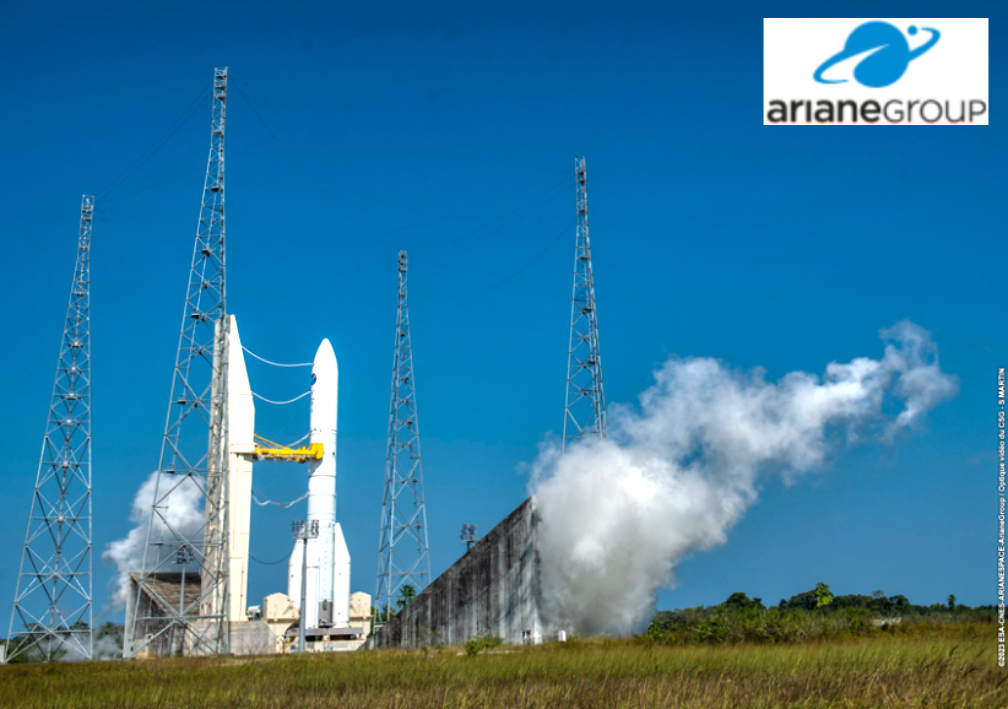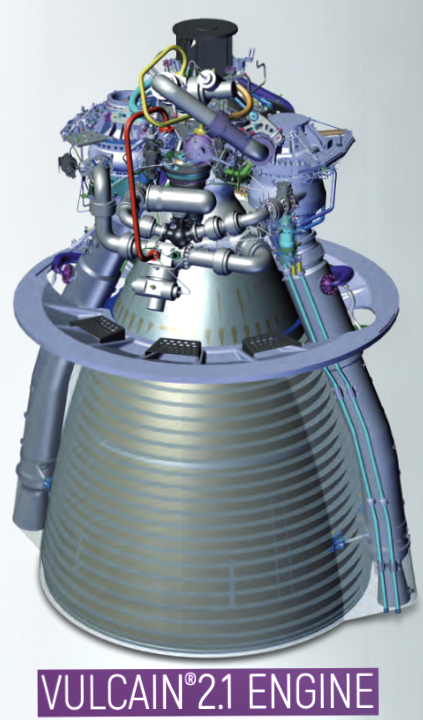
The Ariane 6 core stage has successfully carried out its first complete hot-fire test on its launch pad, as part of the combined tests campaign.
This hot-fire test occurred after a simulation of an entire launch sequence. A first simulation was completed on July 18, in Kourou, up to the ignition of the Vulcain 2.1 engine thrust chamber.

The success of this test enables qualification of all the operations of an Ariane 6 launch sequence, including filling of the tanks and ending with 4 seconds of stabilized operation of the core stage’s Vulcain 2.1 engine. This crucial milestone in the Ariane 6 combined test campaign is part of the overall qualification process of the launch system, comprising the launcher and its ground installations, notably the ELA4 launch complex dedicated to Ariane 6, and its launch area ZL4.
Another long-duration hot-fire test of the core stage is scheduled for October, which will contribute to the qualification of the core stage as flight-ready.
On September 5, 2023, teams from ArianeGroup, the French Space Agency (CNES) and the European Space Agency (ESA) successfully carried out a complete Ariane 6 launch sequence on its launch pad, in the French Guiana Space Center, concluding with a hot-fire test of the launcher’s core stage and start-up of the Vulcain 2.1 engine.
This second hot-fire test of the Ariane 6 core stage with complete start-up of the engine is a key step in the combined tests campaign. It follows on from initial integration of the Ariane 6 launcher on its launch pad, electrical and fluids functional qualification tests and finally the first launch sequence test run on July 18, which was completed successfully, allowing validation of the test up to ignition of the engine’s combustion chamber.
This time, the test sequence was run in the same way as the previous one, with a launch sequence and final countdown representative of a launch, including removal of the mobile gantry and filling of the launcher’s upper and core stage tanks with liquid hydrogen (-253°Celsius) and liquid oxygen (-183°Celsius). The test ended with the ignition and the start-up of the core stage’s Vulcain 2.1 engine, followed by four seconds of stabilized operations. The success of this hot-fire test contributes to qualification of the launch sequence operations and engine ignition on the launch pad.
In October, the launcher will also have to complete a core stage long hot-fire test, including about eight minutes (470 seconds) of operation for the Vulcain 2.1 engine. This test will cover the entire flight phase of the core stage and will contribute to “flight ready” qualification of the core stage.
The liquid propulsion stages for the first Ariane 6 flight model are being integrated and finalized on ArianeGroup’s sites in Les Mureaux (France) for the core stage and in Bremen (Germany) for the upper stage.
Moreover, the Ariane 6 boosters (called ESR, Equipped Solid Rockets) have already been qualified by hot-fire tests and their P120C solid propulsion engines have twice been used successfully in flight with Vega-C. They are integrated on-site at the Guiana Space Center (CSG)
The Ariane 6 program is managed and funded by ESA. As industrial lead contractor and design authority for the launcher, ArianeGroup is responsible for its development and production with its industrial partners, as well as for its marketing through its Arianespace subsidiary. CNES and its contractual partners are responsible for the construction of launch pad no. 4 (ELA4) dedicated to Ariane 6, comprising the launch pad, in Kourou, French Guiana. CNES in partnership with ArianeGroup also conducts the combined tests under the responsibility of ESA
“This successful hot-fire test of the core stage supplements the test performed on July 18 and is a major step towards qualification of Ariane 6, because we have notably validated all the operations needed to run a complete launch campaign. Our objective is to cut the time between two flights to a third of that needed for Ariane 5. This is crucial to being able to ramp up Ariane 6, to meet the needs of Arianespace’s customers. These successes are made possible by close collaboration between the teams from ESA, CNES, ArianeGroup and Arianespace and by their unwavering commitment to the development of the Ariane 6 launch system.” — Martin Sion, CEO, ArianeGroup
